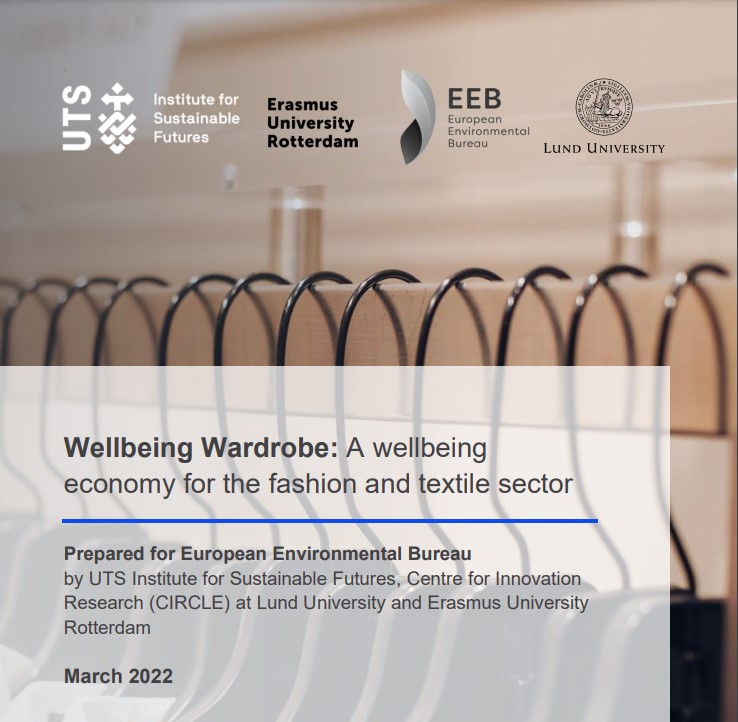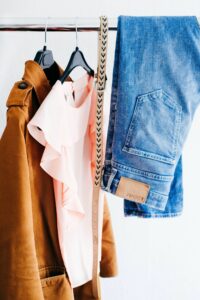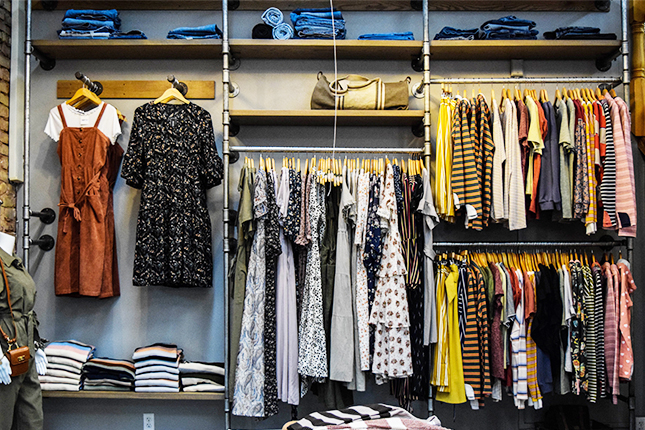A new report commissioned by the European Environmental Bureau titled “Wellbeing Wardrobe: A wellbeing economy for the fashion and textile sector” says that only a radical rethink of its economic model can curb the fashion industry’s sustainability problem. The research, led by the Institute for Sustainable Futures at the University of Technology Sydney, makes a case for moving fashion beyond growth towards a system where human and ecological health comes first.
The report highlights that our current dominant economic paradigm, focused on continuous GDP growth and material accumulation, is not sustainable. This growth-oriented mindset has resulted in dangerous climate change and biodiversity loss, tested the limits of critical planetary boundaries, and failed to provide stable livelihoods, adequate nutrition or access to education, housing, healthcare and decent work to a large percentage of the global population. We need a new way forward. The report also indicates that there are a range of growth-alternative economic models, including wellbeing economics, doughnut economies, steady-state, post-growth, and degrowth, all of which provide a way to pursue human and ecological wellbeing rather than GDP growth.

The Wellbeing Wardrobe
Achieving a post-growth fashion and garment sector will require far-reaching reforms and the reconceptualization of roles and responsibilities in our society. The European Union (EU) Textile Strategy offers an opportunity to start the journey, and the Wellbeing Wardrobe project sets out to contribute to the debate around clothing, textiles, and garment policy in the EU and to highlight where concepts of wellbeing and post-growth economics could increase the scope and effectiveness of the EU Textile Strategy. Rethinking the impacts and meaning of fashion and clothing will foster dialogue between industry and consumers regarding what constitutes sufficient consumption and how this can be achieved. In addition, deep supply chain collaboration across fashion, textile and garment sectors will be crucial to ensuring a just transition for all involved. This shift will also require better indicators that measure and track wellbeing principles across the sector and improved data quality and metrics to determine and evaluate progress.
 A New Direction
A New Direction
This report aims to start envisaging this new direction and to ask the question: what might a postgrowth sector designed around a wholly different economic model (rather than simply an optimized version of the current one) really look like? To answer this question, we draw together two distinct bodies of literature – wellbeing economics and fashion sustainability – to find intersections and identify common ground as a basis for conversations and practices that take us towards a sector that operates within planetary boundaries and ensures livelihoods and dignity for all those who make and wear clothing. This is the vision of a Wellbeing Wardrobe. For complete report, please click here.



